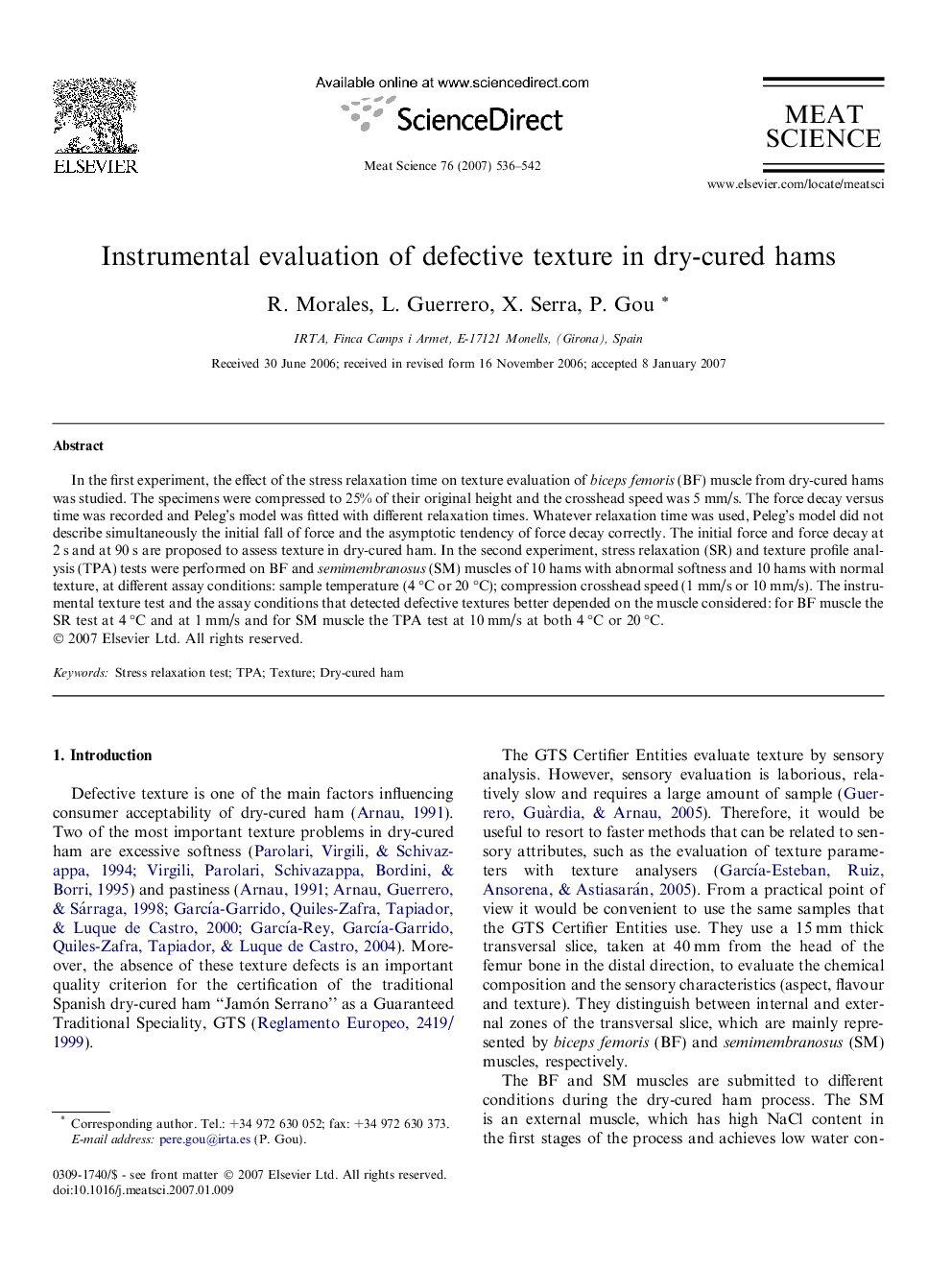| Article ID | Journal | Published Year | Pages | File Type |
|---|---|---|---|---|
| 2452025 | Meat Science | 2007 | 7 Pages |
In the first experiment, the effect of the stress relaxation time on texture evaluation of biceps femoris (BF) muscle from dry-cured hams was studied. The specimens were compressed to 25% of their original height and the crosshead speed was 5 mm/s. The force decay versus time was recorded and Peleg’s model was fitted with different relaxation times. Whatever relaxation time was used, Peleg’s model did not describe simultaneously the initial fall of force and the asymptotic tendency of force decay correctly. The initial force and force decay at 2 s and at 90 s are proposed to assess texture in dry-cured ham. In the second experiment, stress relaxation (SR) and texture profile analysis (TPA) tests were performed on BF and semimembranosus (SM) muscles of 10 hams with abnormal softness and 10 hams with normal texture, at different assay conditions: sample temperature (4 °C or 20 °C); compression crosshead speed (1 mm/s or 10 mm/s). The instrumental texture test and the assay conditions that detected defective textures better depended on the muscle considered: for BF muscle the SR test at 4 °C and at 1 mm/s and for SM muscle the TPA test at 10 mm/s at both 4 °C or 20 °C.
